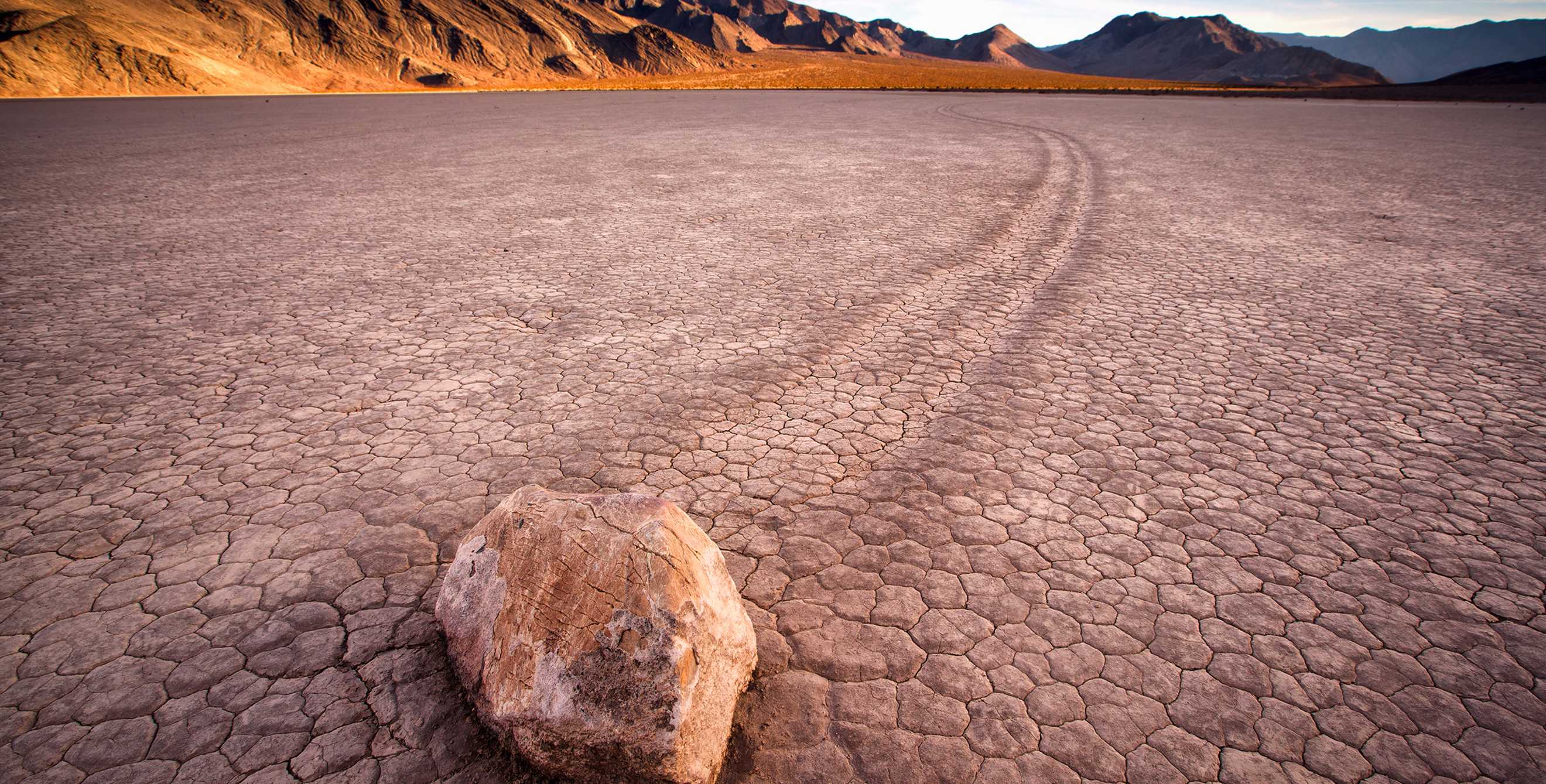
5 Mystery Spots in the West
Here are five places in the West where unexplained phenomena baffle the experts.

When everyday life starts to lack a sense of mystery, it’s the perfect time to investigate these intriguing locales around the West. Search for answers to these seemingly supernatural enigmas—from strange shifts in equilibrium to lakes that simply vanish—and you might just discover a new state of reality.
California
Mystery Spot, Santa Cruz
In a redwood forest in the Santa Cruz Mountains, this gravitational anomaly has been pulling in tourists since 1940, with the famous bumper stickers to prove a visit. In a 150-foot circular area surrounding a rustic, slanted cabin, you can defy the laws of physics in various ways, including bending forward or backward at a 17-degree angle without falling over and seeming to grow shorter or taller in an instant. Theories about these funhouse effects range from optical illusions to UFO-guiding metal cones buried beneath the cabin.
Sailing Stones of Racetrack Playa, Death Valley National Park
Though it’s about 60 miles past the Death Valley Visitors Center, 30 miles down a dirt road, and a half-mile hike from a well-marked parking lot, the remote Racetrack Playa is well worth a visit. On this dry lake bed in the Panamint Mountains, a series of massive boulders—some weighing as much as 700 pounds—appear to move on their own. Once thought to be the work of gods or gravity, one geological study of these “sailing stones” theorizes that a combo of wind, ice, water, and the playa’s own smooth surface spur their mysterious sliding action.
Utah
Great Gallery of Horseshoe Canyon, Canyonlands National Park
One of North America’s most compelling works of art is exposed to the elements in a remote offshoot of Canyonlands, 101 miles from Moab. The Great Gallery of Horseshoe Canyon (formerly known as Barrier Canyon) is a 300-foot-long mural created about 7,000 years ago by archaic nomads who filled their mouths with ochre pigment, then sprayed it onto the sandstone. The resulting petroglyph panel is unnerving, depicting 80 sinister, anthropomorphic figures, including the inhumanly tall “Holy Ghost,” who sports ornate stripes and hollowed-out eyes. The meanings behind these mysterious figures have never been discovered, though explanations range from alien sightings to psychotropic drug use by the artists. The painted figures don’t need sunscreen, food or water, but if you take the five hour-round trip hike required to see the Great Gallery, you’ll definitely need all three.
Washington
Disappearing Lake, Gifford Pinchot National Forest
This crystal-clear lake is the closest thing to a Louisiana bayou you’ll find in the Pacific Northwest, but it only exists in springtime. From roughly March through June, a dry meadow in Washington’s South Cascades fills with up to eight feet of water to become a paddler’s paradise, where you can canoe or kayak through an old-growth cottonwood forest, gliding past mighty trunks at their midpoints. This seasonal phenomenon is thought (but not yet proven) to be the result of ice damming one of the many lava tubes in the area, melting as the winter fades, and drying up entirely before summer. When Disappearing Lake vanishes, it leaves behind the lush South Prairie, strewn with the world’s largest population of Sisyrinchium sarmentosum, a rare wild iris.
Wyoming
The Yellowstone Whispers, Yellowstone National Park
Amidst the calm of Yellowstone, it’s jarring to hear any loud sound—but even more so when no one can explain what you’re hearing. Between Yellowstone and Shoshone lakes, Native Americans, fur trappers, park engineers, and tourists have long reported hearing strange noises described as a swarm of bees, the ringing of telegraph wires, the strumming of a harp, or even metal cables rubbing against each other. The humming, metallic sound builds in volume and intensity until it becomes almost deafeningly loud, then suddenly halts and disappears. Explanations have ranged from mild earthquakes in underground caverns to whirlpools formed by air flowing down from nearby peaks—even ghostly messages—but no definitive cause has ever been found. The best time to hear these whispers is early morning on a clear, windless day.